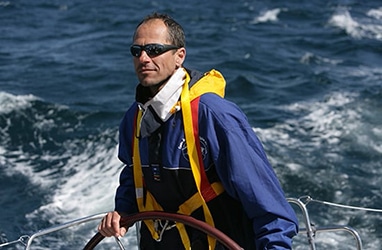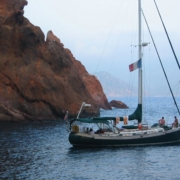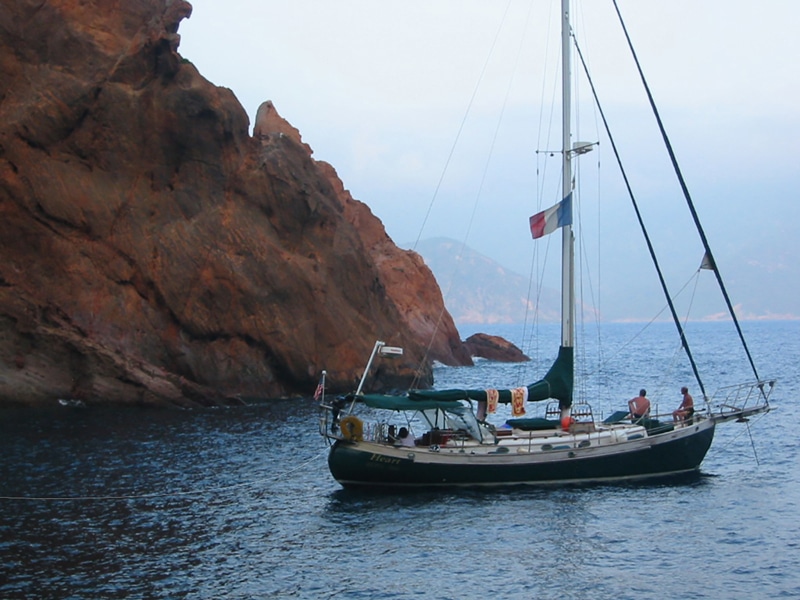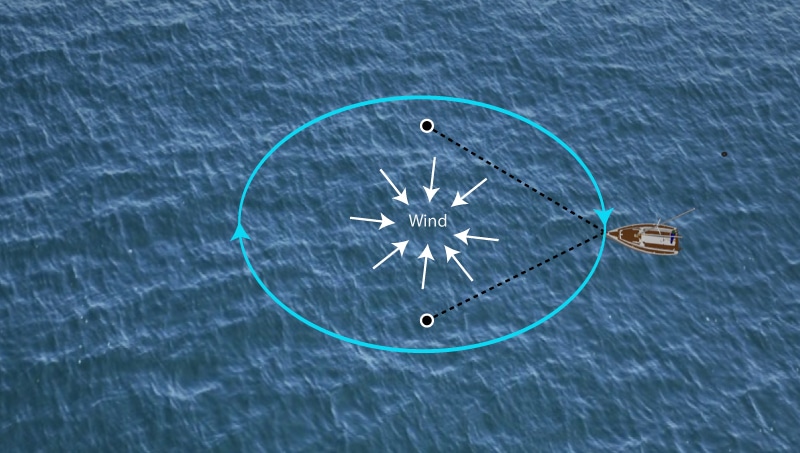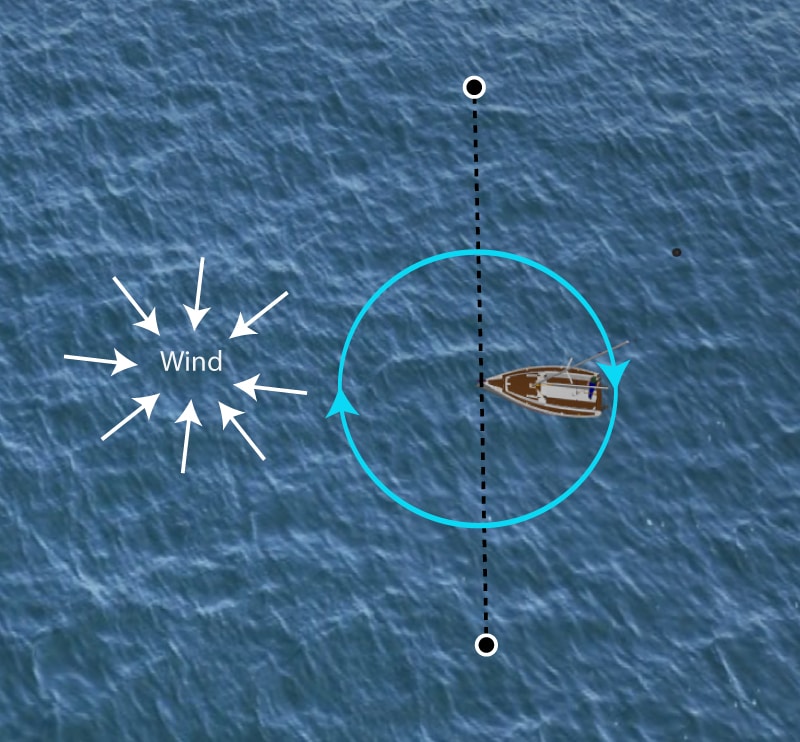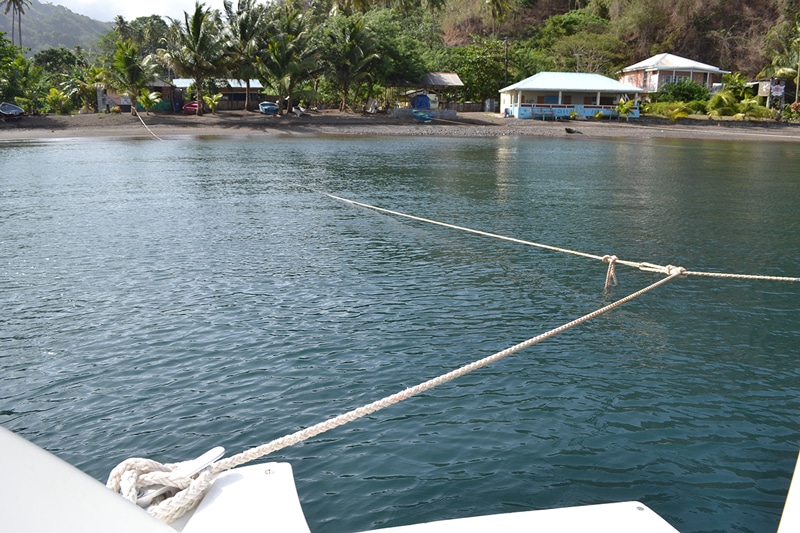Using Multiple Anchors
There are occasions when more than one anchor will add safety and comfort. One possibility is to use one or two anchors from the bow, one from the stern, or both. The conditions requiring this will usually relate to anchoring in heavy weather, tight quarters, or not wanting your vessel to swing onto the beach. The photo below was taken in Corsica, where a tight cove made it necessary to anchor off the front and then secure two lines off the stern to large rocks on the shore.
Multiple Anchors
Normally the bow anchor is set first; then the stern anchor is placed using a dinghy to take it out to the desired spot. Then the crew on the vessel will pull the rode until the anchor sets. When doing this you will want to ensure the anchor is indeed set. A bow/stern anchor combination has inherent danger if the wind changes to abeam. The area profile of the boat is much larger when viewed from its side, thus the wind loading is much larger when it comes from abeam. This can cause the anchors to drag. For this reason, stern and bow anchors are seldom advised.
In heavy weather, using two anchors off the bow may be prudent and desirable. The two anchors can be aligned extending out front or they can be positioned 45 to 90 degrees to the vessel’s bow. Extreme care and thought are needed when using two anchors off the front. If the boat swings in the night the anchor rodes can become tangled.
In the following diagram, two anchors are set at 45 degrees. Notice the swing circle in the first diagram compared to the subsequent diagram whereby the anchors are set 90 degrees apart. Forty-five-degree set anchors are best in heavy wind conditions as each anchor takes half the load so long as the wind direction is constant.
Swing with Multiple Anchors
Ninety-degree set anchors are best used in light winds in tight quarters where the swing room is a concern. This style of anchoring is called the Bahamian anchoring technique.
Bahamian Anchoring
In every case, if possible, you should dive down to your anchor with a mask and snorkel to ensure it is set properly. You’ll sleep a lot better. Maybe not this time, but one time you will save your boat and possibly your life.
Lone Line Ashore
ConvenientAnchoring our catamaran in a bay off St. Vincent, we dropped the hook off the bow and then backed up toward the beach until the rode was taut. Then we ran a bridle connected to both sides of the cat to a single long line that we ran ashore to the base of a palm tree. This anchoring is called a “Mediterannean Mooring with Long Line Ashore”. Many thanks to Morris, the local who helped us out with this maneuver. |
Innovative Anchoring
The long line ashore is a good way to prevent swinging during the night and provides a convenient way to get close to the shore when desired. The long line runs from the stern to the shore while the bow anchor holds the boat out away from the shore. There is danger in this, however. A strong wind from abeam puts a large load on the anchor, which can cause the anchor to drag and thus pivot you onto the shore.

